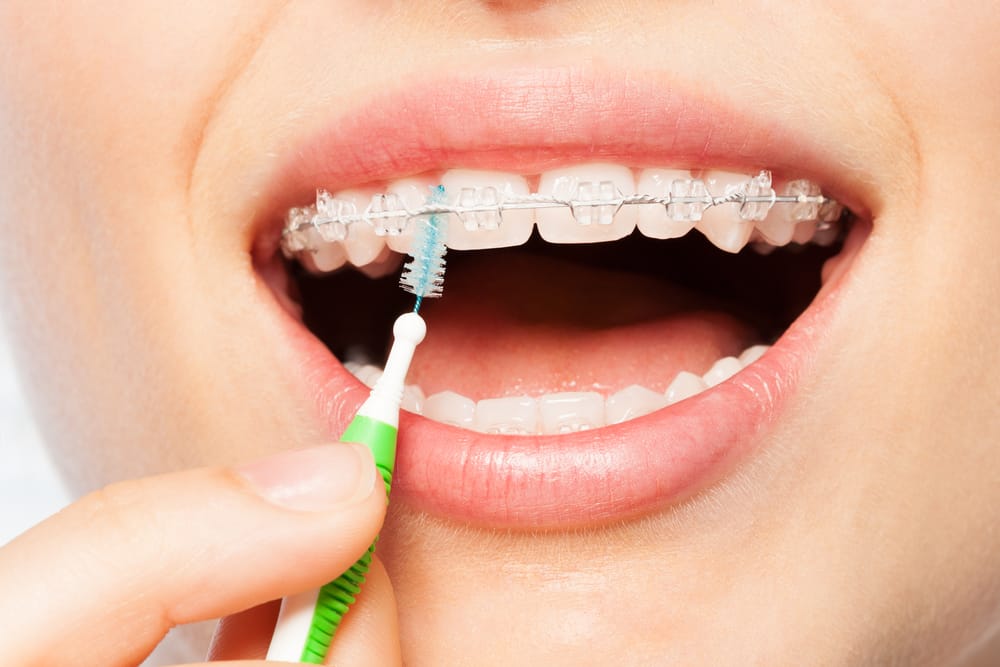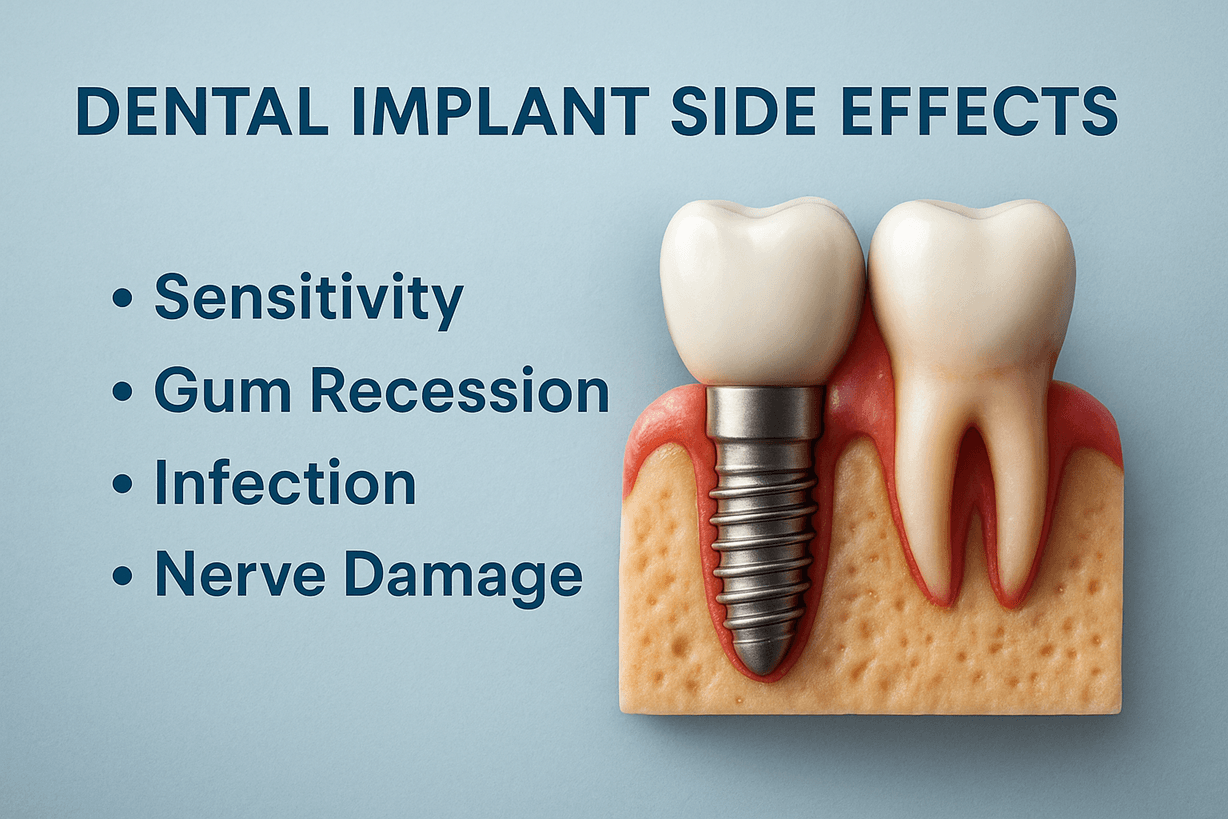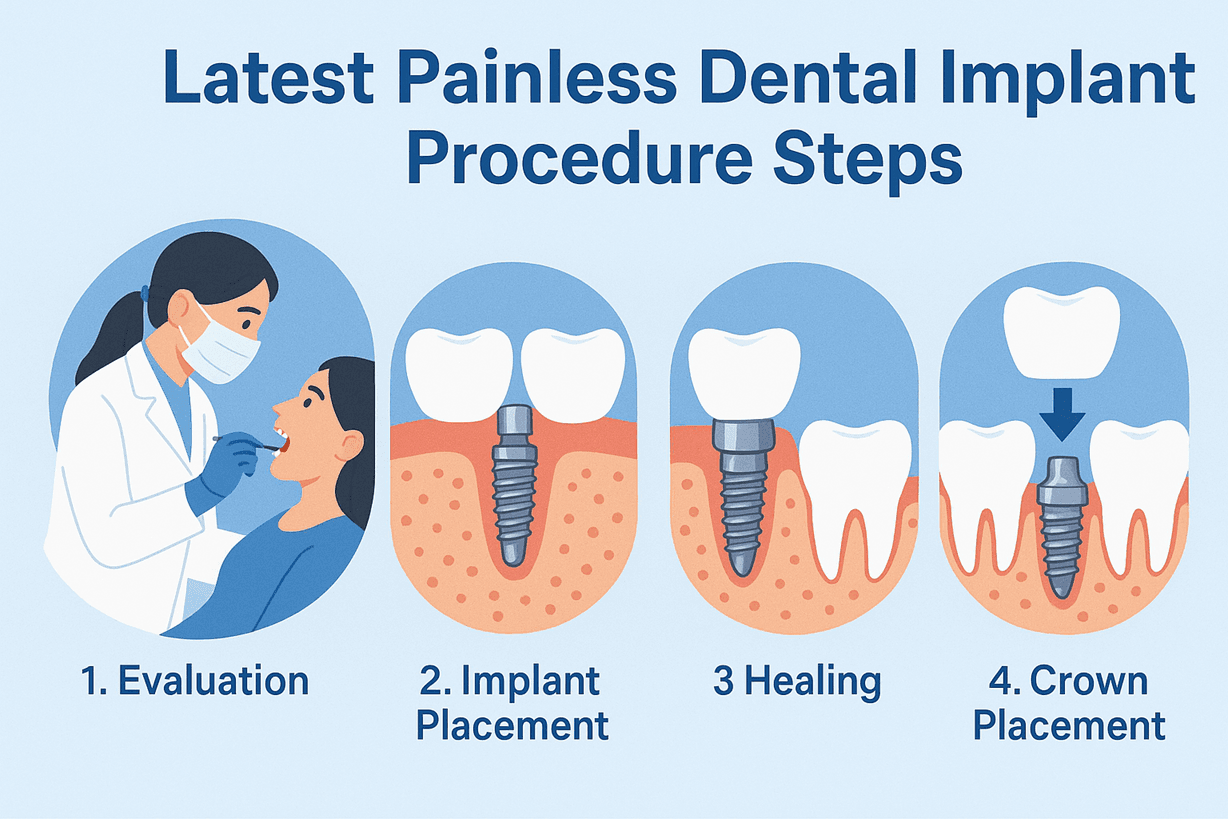Table of content
- What Are Ceramic Braces?
- What are the Benefits of Ceramic Braces?
- How Much Do Ceramic Braces Cost in India?
- Types of Ceramic Braces
- Why Choose Ceramic Braces?
- Maintenance ad Care for Ceramic Braces
- How to Keep Ceramic Braces Clean and Stain-Free?
- Conclusion

Ceramic braces are an excellent orthodontic option for individuals seeking a more discreet way to straighten their teeth.
Unlike traditional metal braces, ceramic braces use clear or tooth-colored brackets that blend seamlessly with your teeth, making them a preferred choice for adults and teenagers concerned about aesthetics.
In this blog, we'll explore everything you need to know about ceramic braces, including:
- The Cost of Ceramic Braces
Their Key Benefits
Types of Braces
Before and After Results
Why choose Braces?
Ceramic Braces Maintenance and Care
Whether you're considering orthodontic treatment for yourself or a loved one, this comprehensive guide will help you make an informed decision. Let’s dive in!
What Are Ceramic Braces?
Ceramic braces made from transparent or tooth-colored ceramic, clear braces are designed to reflect your enamel’s shade, making them nearly invisible from a distance. They’re ideal for anyone looking for a subtle orthodontic solution.
In 1987, ceramic braces were initially made available. They are composed of aluminum oxide, which is just behind diamonds in terms of mineral hardness on the Mohs scale and has a 9/10 rating in its most prevalent natural form of corundum.
The braces' brackets are adhered to the patient's teeth using adhesive. Ceramic, stainless steel, and other materials can be used to make brackets. An arch wire joins the bands and brackets and regulates the movement of the teeth.
Because ceramic braces are less obvious than metal braces, they are a popular option. However, they do have certain drawbacks, which is why some people might decide to use metal and ceramic braces in combination.
What are the Benefits of Ceramic Braces?
- Compared to metal braces, they are less noticeable. These braces can be made of clear or tooth-colored ceramic material.
- Compared to clear aligners, they shift teeth more quickly. Teeth straightening with ceramic braces takes 18 to 36 months. Even if your teeth don't need much correction, popular clear-alignment techniques like Invisalign might take a year or more to start working. Furthermore, severe cases of malocclusion (a crooked bite) or misalignment cannot be corrected with clear-alignment techniques.
- The colors you use are up to you. There is only one color available for metal braces: gray (or, if available, glossy metallic silver). Ceramic braces come in almost every possible hue.
- They have no effect on imaging testing.
How Much Do Ceramic Braces Cost in India?
The cost of ceramic braces in India varies depending on the city, orthodontist expertise, and case complexity. On average, prices range from ₹30,000 to ₹1,30,000, with metro cities like Mumbai and Delhi charging more than smaller towns.
Choosing the Right Treatment
When selecting ceramic braces, consider the following:
Budget and Payment Plans: Many clinics offer EMI options to make the treatment more affordable.
Orthodontist Experience: Choose a qualified professional with experience in ceramic braces treatment.
Location: Costs may vary, so exploring dental clinics in your city or neighboring towns may offer savings.
The cost of ceramic braces in India varies across different cities, influenced by factors such as the clinic's location, the orthodontist's expertise, and the complexity of the dental case.
Below is an overview of the estimated price ranges for ceramic braces in the specified cities:
| City | Average Cost of Ceramic Braces (INR) |
| Delhi | ₹50,000 – ₹1,00,000 |
| Chennai | ₹35,000 – ₹60,000 |
| Kerala | ₹60,000 – ₹1,30,000 |
| Bangalore | ₹60,000 – ₹90,000 |
| Mumbai | ₹65,000 – ₹1,00,000 |
| Hyderabad | ₹30,000 – ₹65,000 |
1. Cost Breakdown of Ceramic Braces
A comprehensive ceramic braces treatment involves several expenses. Here’s how the total cost may be distributed:
| Expense Types | Estimated Cost (INR) |
| Consultation Fee | ₹500 - ₹2,000 |
| Diagnostic Tests (X-rays, Scans) | ₹2,000 - ₹5,000 |
| Ceramic Braces Installation | ₹80,000 - ₹2,00,000 |
| Monthly Adjustments | ₹2,000 - ₹5,000 per visit |
| Retainers (Post-Treatment) | ₹5,000 - ₹20,000 |
| Follow-Up Visits | ₹1,000 - ₹3,000 per visit |
2. Factors Influences the Cost of Ceramic Braces
The location and duration of treatment can affect the cost of ceramic braces. The cost of treatment is typically several thousand dollars.
Orthodontic therapy is covered by certain dental insurance plans. But frequently, they merely pay a percentage of the cost. Some dentists offer payment plans so that patients can spread out the cost over time. Before committing to a treatment plan, a person can consult with an orthodontist or insurance company.
Several factors influence the final cost of your ceramic braces treatment:
Location
Urban areas and regions with a higher cost of living tend to have more expensive orthodontic care.
Complexity of the Case
Severe misalignment or bite issues may require longer treatment and frequent adjustments, increasing the overall cost.
Orthodontist’s Expertise
Experienced orthodontists may charge higher fees due to their advanced skills and successful track records.
Treatment Duration
Longer treatment plans may lead to higher costs due to the number of visits and adjustments required.
Additional Treatments
Some patients may need preparatory procedures like tooth extractions or attachments, adding to the overall expense.
Insurance Coverage
Dental insurance plans may cover a portion of the cost, particularly if braces are deemed medically necessary.
Payment Plans
Many orthodontists offer flexible payment options, allowing you to spread the cost over manageable monthly installments.
Types of Ceramic Braces
Ceramic braces are a versatile and aesthetically pleasing orthodontic option for straightening teeth. While they function similarly to traditional metal braces, their ceramic material blends with the natural color of teeth, making them far less noticeable.
However, not all ceramic braces are the same. Let’s explore the different types available and how they cater to individual preferences.
1. Ceramic Teeth Braces: What They Are and How They Work
Ceramic teeth braces use brackets made from a tooth-colored or clear ceramic material instead of metal. These braces are attached to the front of the teeth and connected with arch wires that apply gentle pressure to guide teeth into their correct positions.
✅ Key Features:
Designed to be less visible than metal braces.
Effective for treating mild to severe misalignment.
Suitable for adults and teenagers seeking a subtle orthodontic option.
How They Work:
The orthodontist bonds the ceramic brackets to your teeth using dental adhesive.
A metal or tooth-colored archwire is placed through the brackets.
Adjustments are made periodically to ensure your teeth gradually move into place.
2. Ceramic Braces with Color: Personalized Customization
While many choose ceramic braces for their discreet look, some patients opt to add a touch of personality with colored elastic bands. These bands, also called ligatures, hold the archwire in place and come in a variety of colors.
✅ Benefits of Colored Ceramic Braces:
Ideal for teenagers and younger patients who want to make their braces fun.
Seasonal or themed colors can be chosen for special occasions.
Allows users to express their personality while undergoing treatment.
Popular Color Choices:
Pastels for a soft and elegant appearance.
Bright Colors for a bold statement.
Clear or White for a barely noticeable look.
3. Clear Ceramic Braces: The Most Discreet Option
Clear ceramic braces are crafted from transparent ceramic materials that blend seamlessly with natural teeth. Paired with clear or white archwires, they offer the most discreet orthodontic treatment.
✅ Why Choose Clear Ceramic Braces?
Practically invisible from a distance.
Ideal for working professionals, brides, or individuals in the public eye.
Provides effective results with a clean, aesthetic look.
Considerations:
Clear brackets can stain if not maintained properly.
Extra oral hygiene is essential to prevent discoloration.
Which Type of Ceramic Braces is Right for You?
For Maximum Discretion: Choose clear ceramic braces.
For Personalization: Opt for colored ceramic braces.
For a Balanced Look: Standard ceramic teeth braces are a reliable and aesthetic choice.
Why Choose Ceramic Braces?
One of the primary reasons people choose ceramic braces is their subtle appearance. The brackets are made from tooth-colored or clear ceramic material, making them far less noticeable than metal braces.
Why They’re More Attractive:
Blends with Natural Teeth: Ceramic brackets match your tooth color, creating a seamless look.
Clear or White Wires Available: For additional discretion, you can opt for tooth-colored wires.
Less Visible in Photos: Perfect for special occasions and professional settings.
Ideal for Adults and Teens: Many adults prefer ceramic braces to maintain a mature and polished appearance during treatment.
Comfort and Effectiveness
✅ Benefits of Comfort and Functionality:
- Gentler on Gums: Ceramic material is less abrasive, reducing the risk of irritation.
- Reliable Results: Ceramic braces offer the same level of effectiveness as metal braces for most orthodontic cases.
- Suitable for Complex Cases: Effective in treating moderate to severe misalignment, teeth gaps, and bite issues.
✅ You Might Be a Good Candidate If:
- You are an adult or a teenager who values a discreet orthodontic solution.
- You have mild to moderate misalignment or bite issues.
- You are committed to proper oral hygiene to prevent staining of the brackets.
- You don’t participate in high-impact sports where braces may be prone to damage.
🚫 You May Want to Consider Alternatives If:
- You have severe misalignment that may require longer treatment.
- You are concerned about the possibility of staining from coffee, tea, or smoking.
- You prefer a faster, more cost-effective option like metal braces.
Maintenance ad Care for Ceramic Braces
Tips for Maintaining Ceramic Braces for Better Durability and Appearance
Maintaining your ceramic braces is essential for keeping them clean, stain-free, and effective throughout your treatment. While they are designed to be discreet, ceramic braces are more prone to discoloration compared to metal braces.
Following a few simple care tips can ensure they stay looking great.
1. Practice Good Oral Hygiene
Brush After Every Meal: Use a soft-bristled toothbrush and fluoride toothpaste to prevent plaque buildup.
Floss Daily: Use a floss threader or orthodontic floss to clean between braces and teeth.
Rinse with Mouthwash: An antibacterial mouthwash helps reduce bacteria and freshens breath.
2. Avoid Staining Foods and Drinks
Certain foods and beverages are more likely to stain ceramic braces. Limiting or avoiding them can help maintain their appearance.
Foods and Drinks to Avoid:
Coffee, tea, and red wine
Curries, tomato sauces, and soy sauce
Dark berries and fruit juices
Colored candies and sodas
Tip: If you consume any staining foods, rinse your mouth with water immediately and brush your teeth as soon as possible.
3. Attend Regular Orthodontic Appointments
Schedule regular check-ups for adjustments and professional teeth cleaning.
Your orthodontist will replace any stained ligatures (the small bands holding the wire) if necessary.
4. Use Orthodontic Wax for Comfort
Ceramic braces may occasionally cause irritation to the cheeks or gums. Orthodontic wax can be applied to smooth any rough edges.
5. Avoid Smoking and Tobacco Products
- Smoking is one of the biggest culprits for staining ceramic braces and teeth. Quitting can significantly improve the appearance of your smile.
How to Keep Ceramic Braces Clean and Stain-Free?
Clear and white ceramic braces require extra care to maintain their transparent or tooth-colored appearance.
Here are some additional tips for keeping them clean:
✅ Use a Whitening Toothpaste: Helps prevent discoloration of both your teeth and the brackets. However, avoid using abrasive products that may damage the ceramic.
✅ Drink Through a Straw: When consuming beverages like coffee or soda, using a straw minimizes contact with the brackets, reducing staining.
✅ Choose Ligature Colors Wisely: While clear or white ligatures are popular for their invisibility, they can stain more easily. Opting for light gray or silver ligatures can provide a clean look with less visible staining.
✅ Consider Interdental Brushes: These small, narrow brushes are effective for cleaning around brackets and wires, where regular toothbrushes may not reach.
Conclusion
Ceramic braces are an excellent choice for individuals seeking a discreet and effective orthodontic solution. With their aesthetic appeal and reliable performance, they offer a comfortable and confidence-boosting way to achieve a straighter smile.
Key Benefits Recap:
Aesthetic Appeal: Blends with natural teeth for a subtle appearance.
Effective Results: Suitable for treating mild to severe misalignment.
Customizable Options: Available in clear, white, or colored variations.
Ultimately, ceramic braces provide an excellent balance of appearance, comfort, and effectiveness. Consult with your orthodontist to determine if they’re the best choice for your smile transformation!
Ready to take the next step? Schedule a consultation with an orthodontist today to explore your options and get a personalized treatment plan.
FAQs
1. Are ceramic braces better than metal?
Both ceramic and metal braces are effective, but ceramic braces offer a more aesthetic, discreet look. They work similarly to metal braces but are slightly more delicate. If you prioritize appearance and comfort, ceramic braces are a great choice.
2. Are ceramic braces painful?
Like any orthodontic treatment, ceramic braces may cause mild discomfort when first placed or adjusted. However, their smooth, tooth-colored brackets reduce gum irritation compared to metal braces, making them more comfortable for many patients.
3. How much do ceramic braces cost in India?
Ceramic braces typically cost between ₹35,000 to ₹90,000, depending on the complexity of your case, the clinic, and the orthodontist’s expertise. We provide a detailed treatment plan and cost breakdown to ensure transparency.
4. Are ceramic braces effective?
Absolutely! Ceramic braces work just as well as metal braces for most orthodontic cases. While they may be slightly less durable, they efficiently correct misalignment, gaps, and bite issues with proper care.
5. Are ceramic braces visible?
Ceramic braces are much less noticeable than metal braces. They use tooth-colored brackets that blend with your natural teeth, making them a great option for patients who want a more discreet treatment.
6. How do ceramic braces work?
Ceramic braces apply continuous, gentle pressure on your teeth using brackets, wires, and elastics. Over time, this shifts your teeth into alignment, improving both function and appearance.
7. How are ceramic braces put on?
The process is simple and painless! We clean your teeth, bond the ceramic brackets using dental adhesive, attach an archwire, and secure them with elastics. The procedure takes about an hour, and you can resume normal activities immediately.
8. What are ceramic braces made of?
Ceramic braces are made from a durable, medical-grade ceramic material designed to be strong yet discreet. This allows them to blend seamlessly with your teeth while providing effective orthodontic correction.
9. Can ceramic braces damage your teeth?
Ceramic braces won’t damage your teeth if you maintain good oral hygiene. However, if plaque builds up around the brackets, it can lead to cavities or enamel wear. Regular brushing, flossing, and professional cleanings help keep your teeth healthy during treatment.
10. Can ceramic braces stain?
The ceramic brackets are stain-resistant, but the elastic bands holding the wire can discolor over time, especially with coffee, tea, turmeric, or smoking. We recommend avoiding staining foods and replacing elastics regularly to maintain a clean look.
11. Can ceramic braces have colors?
Yes! While the brackets remain clear or tooth-colored, you can choose from a variety of elastic band colors to personalize your braces and make them fun.
12. Why do ceramic braces turn yellow?
Ceramic brackets don’t turn yellow, but the elastics can stain due to pigmented foods, drinks, or smoking. Regular oral hygiene and routine orthodontic visits help prevent discoloration, keeping your braces looking fresh.


